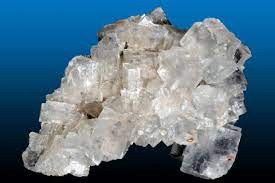Identity.
Chlorine is a chemical element; it has symbol Cl and atomic number 17. The second-lightest of the halogens, it appears between fluorine and bromine in the periodic table and its properties are mostly intermediate between them. Chlorine is a yellow-green gas at room temperature.
Atomic Structure:
Chlorine has an atomic number of 17. This means that chlorine's atomic structure has a total of 17 protons and 17 electrons. These electrons are organized into three electron shells: K, L, and M. Chlorine has two electrons in its first electron shell and eight electrons in its second electron shell.
History.
Hydrochloric acid (HCl) was known to the alchemists. The gaseous element itself was first produced in 1774 by Carl Wilhelm Scheele at Uppsala, Sweden, by heating hydrochloric acid with the mineral pyrolusite which is naturally occuring manganese dioxide, MnO2. A dense, greenish-yellow gas was evolved which he recorded as having a choking smell and which dissolved in water to give an acid solution. He noted that it bleached litmus paper, and decolourised leaves and flowers.
Humphry Davy investigated it in 1807 and eventually concluded not only that it was a simple substance, but that it was truly an element. He announced this in 1810 and yet it took another ten years for some chemists finally to accept that chlorine really was an element.
Properties.
Some key properties of chlorine include:
- Atomic number: 17
- Boiling point: (-)34.6 Celsius
- Color: Yellowish green
- Odor: Bleach-like
- Chemical properties: Reacts violently with hydrogen gas in the presence of light to form hydrochloric acid.
Chlorine has a melting point of -100.98°C, boiling point of -34.6°C, density of 3.214 g/l, specific gravity of 1.56 (-33.6°C), with a valence of 1, 3, 5, or 7. Chlorine is a member of the halogen group of elements and directly combines with almost all of the other elements.

